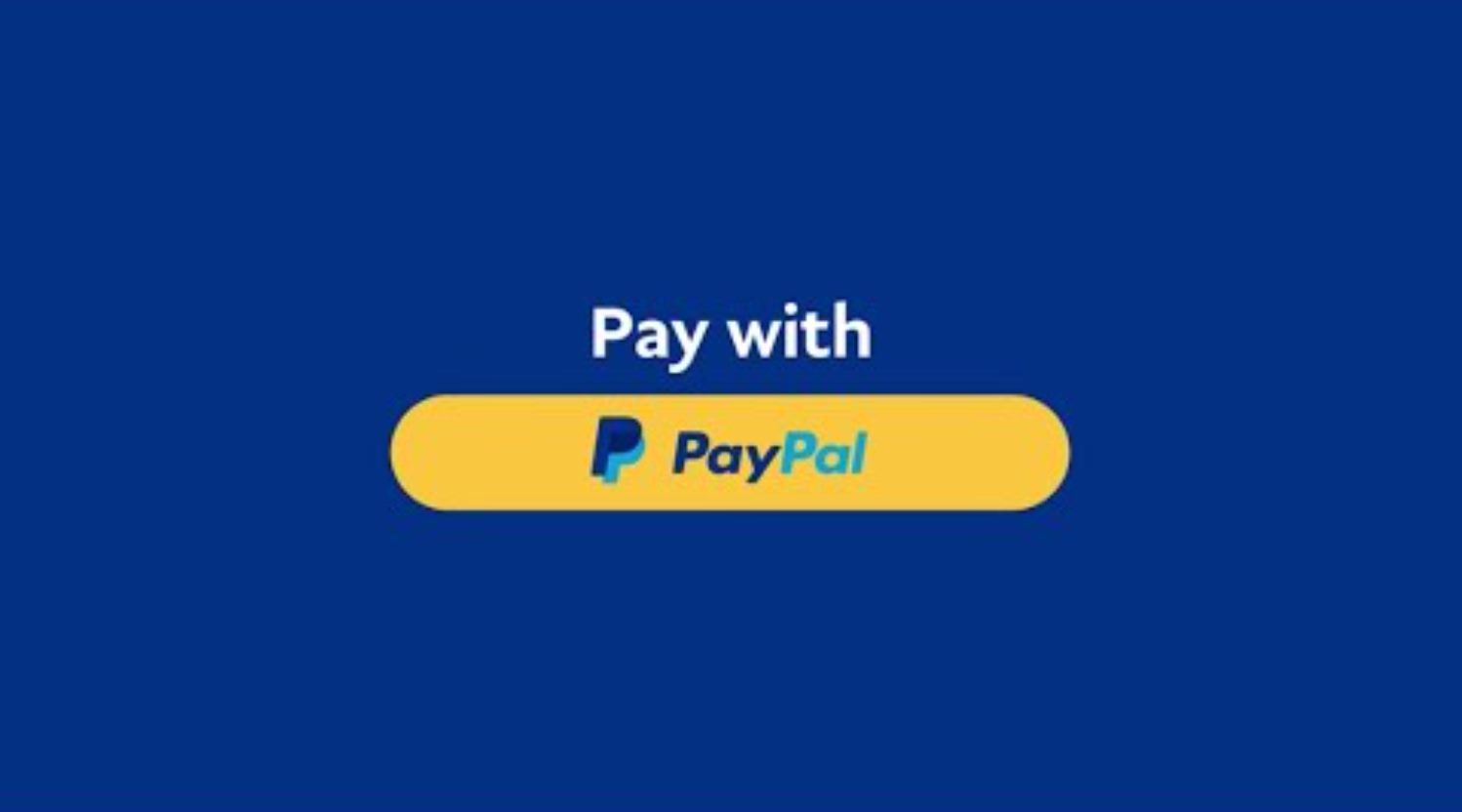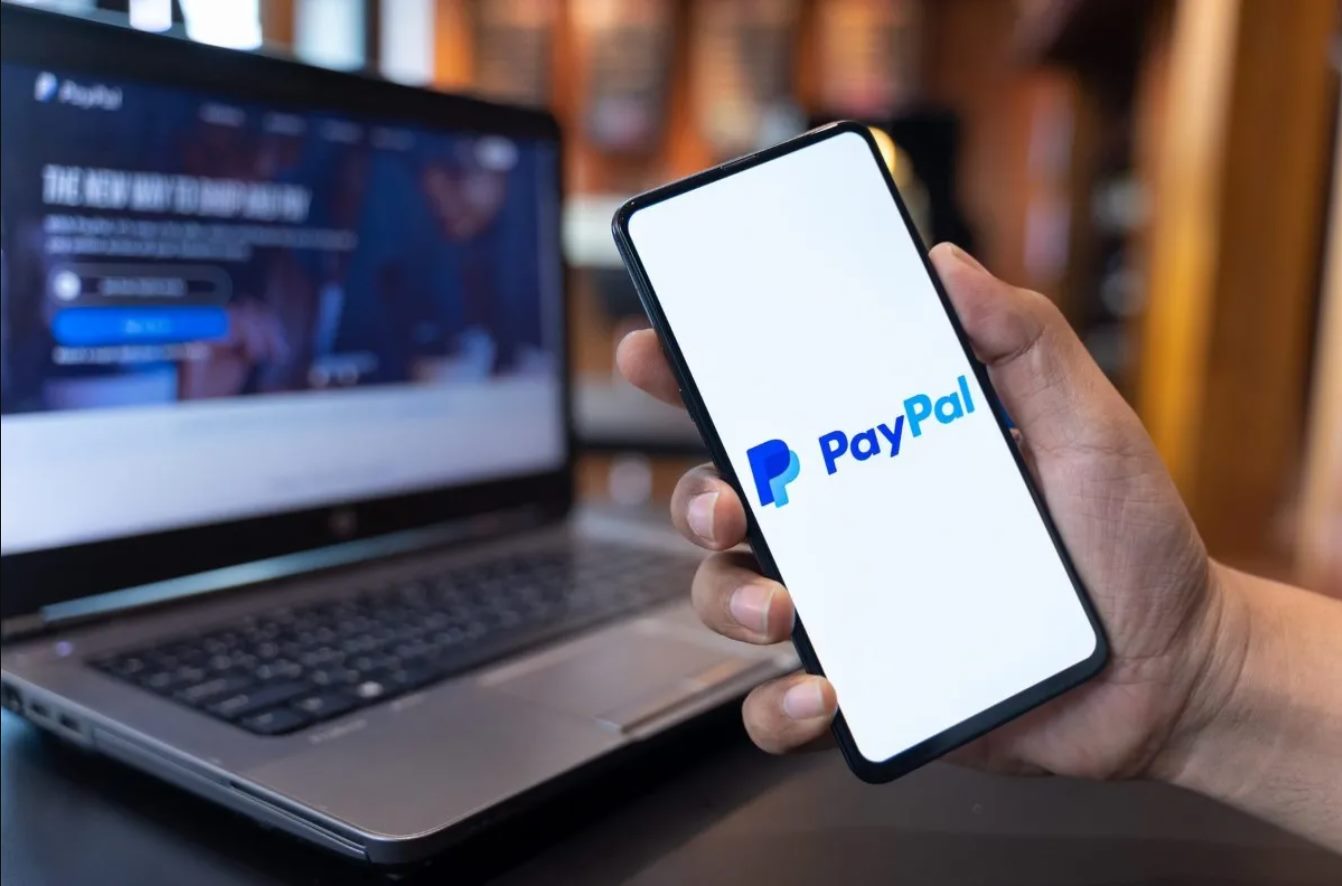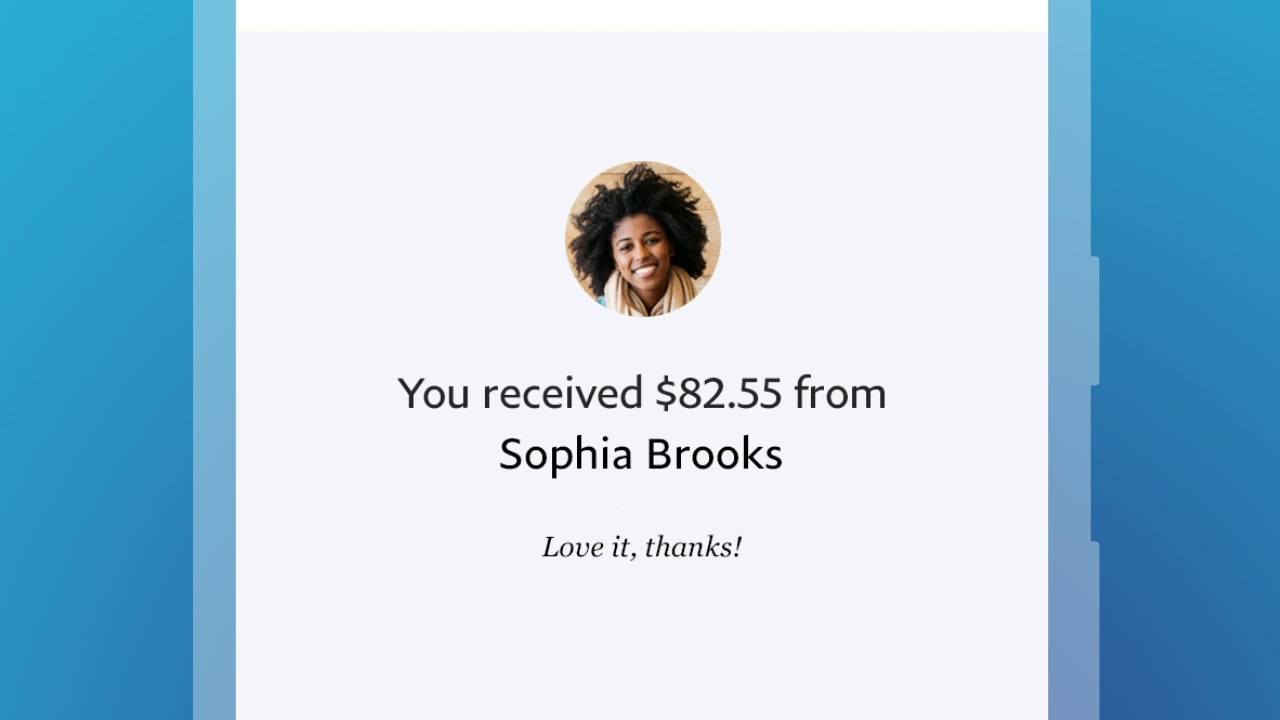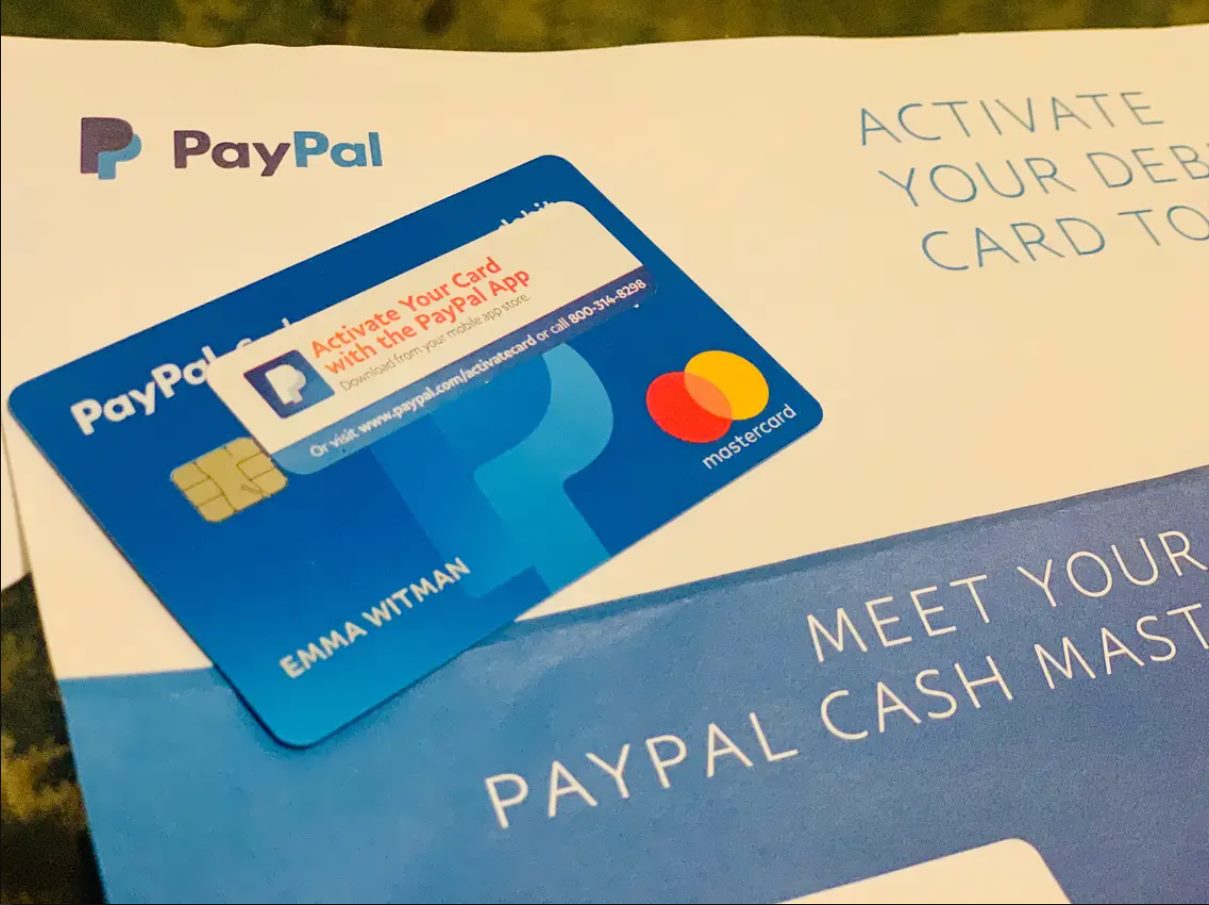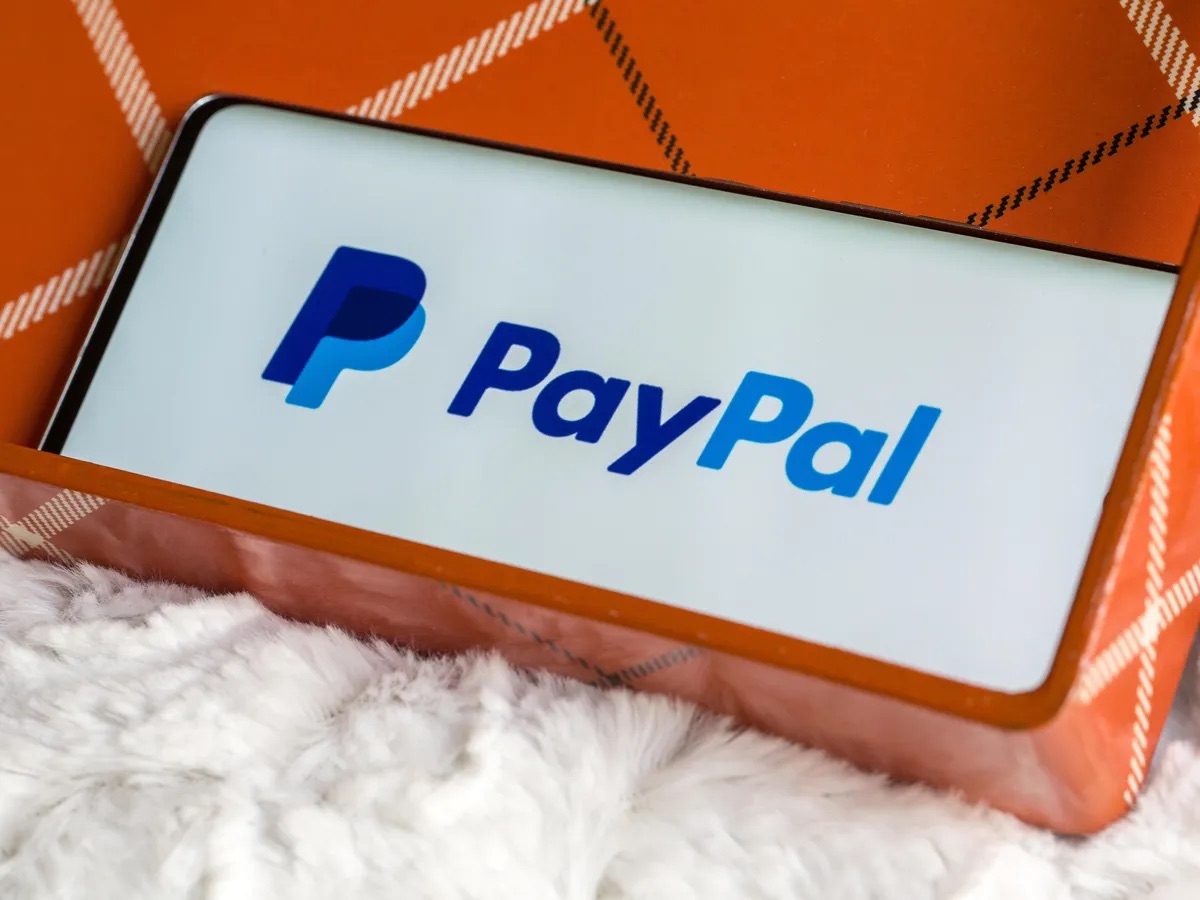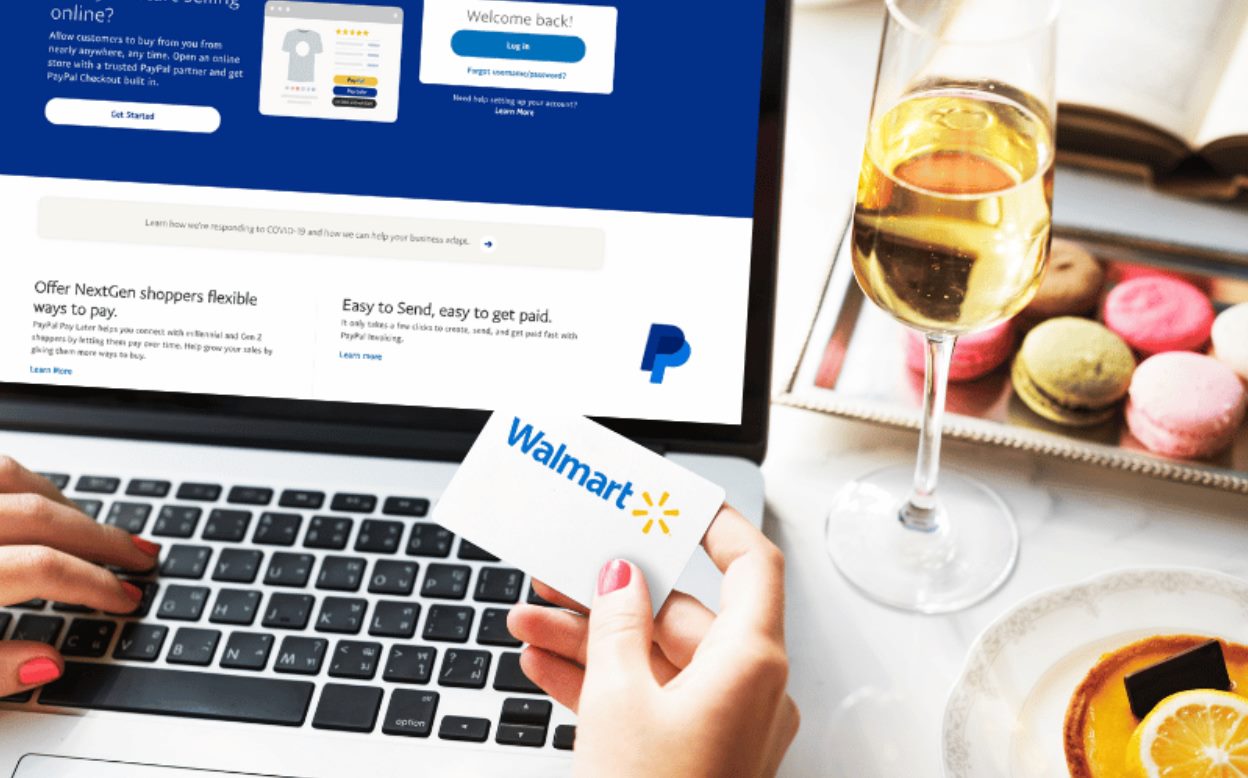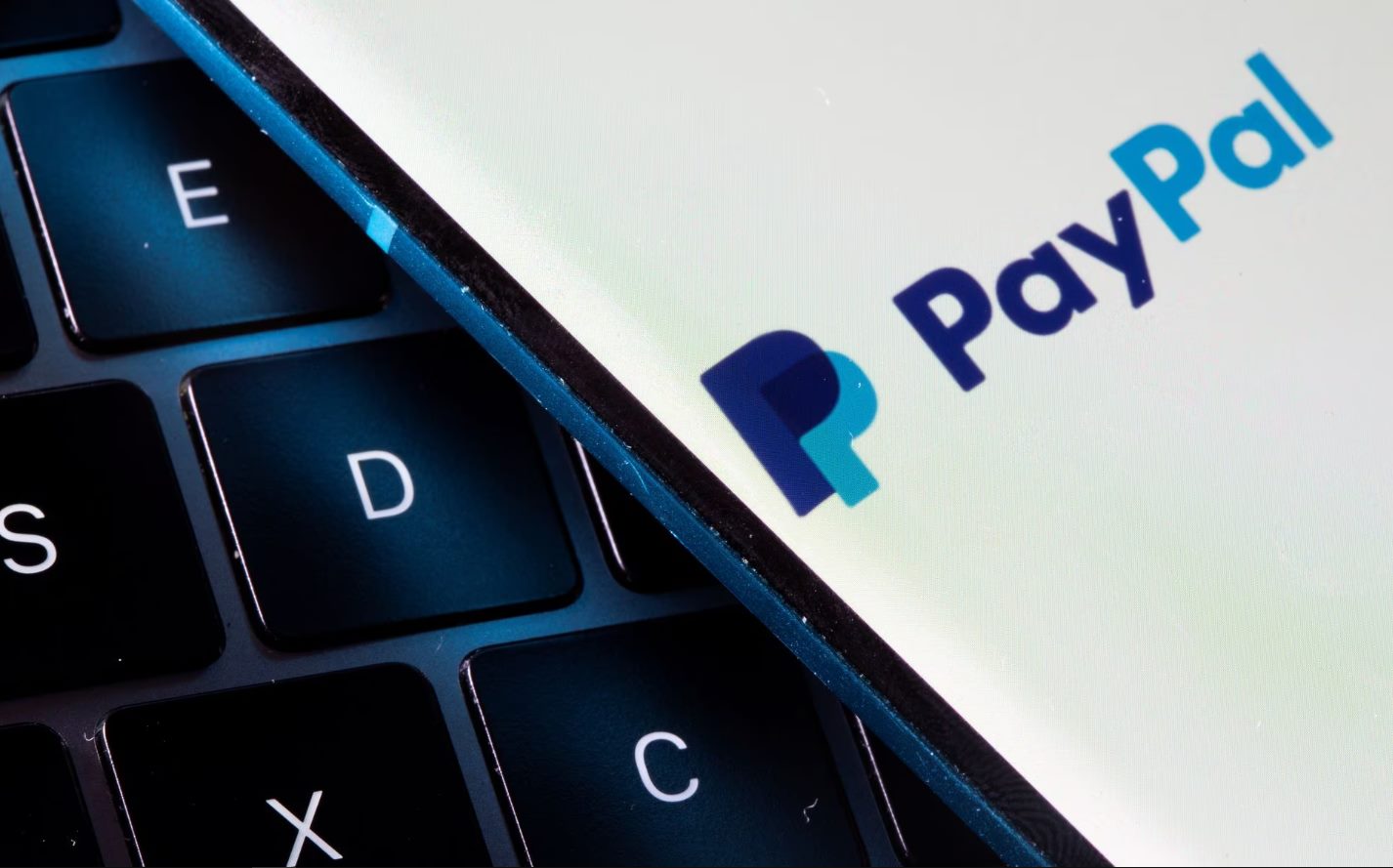What is PayPal?
PayPal is a widely used online payment platform that allows individuals and businesses to send and receive money securely over the internet. With PayPal, you can make payments for goods and services, send money to friends and family, and even shop on various online platforms without directly sharing your financial information.
One of the key advantages of using PayPal is its security features. When you make a payment with PayPal, your financial details, such as credit card or bank account information, are never shared with the recipient. Instead, you simply log in to your PayPal account, confirm the transaction, and the payment is securely processed.
PayPal provides convenience and flexibility, as it can be accessed and used on various devices, including computers, smartphones, and tablets. Additionally, PayPal offers a user-friendly interface that allows you to manage your transactions, view your payment history, and easily monitor your account balance.
Another benefit of using PayPal is the widespread acceptance of the platform. Many online retailers, service providers, and even brick-and-mortar stores accept PayPal as a payment method, making it a versatile option for making purchases both online and offline.
In addition to personal use, PayPal offers a range of features for businesses. Entrepreneurs can set up a PayPal business account, which enables them to receive payments from customers, create invoices, and manage their finances effectively.
Overall, PayPal is a trusted and reliable online payment system that has revolutionized the way people transact online. Its security measures, convenience, and wide acceptance make it a preferred choice for individuals and businesses around the world.
Setting up a PayPal account
Setting up a PayPal account is a simple and straightforward process that allows you to start using the platform to send and receive money. Follow these steps to create your own PayPal account:
- Visit the PayPal website: Go to the official PayPal website and click on the “Sign Up” button.
- Select your account type: Choose between a personal account for personal use or a business account if you are setting up an account for your business.
- Provide your email address: Enter a valid email address that you will use for your PayPal account. Make sure to use an email address that you have access to as PayPal will send important notifications and updates to this email.
- Create a password: Choose a strong and unique password to protect your PayPal account. It is recommended to use a combination of letters, numbers, and special characters to ensure the security of your account.
- Fill in your personal details: Enter your name, address, and phone number. It is important to provide accurate information to avoid any issues with your PayPal account verification.
- Agree to the terms and conditions: Read through the terms and conditions of using PayPal and check the box to indicate your agreement.
- Add a payment method: PayPal gives you the option to link your bank account or credit/debit card to your account. This will enable you to easily make payments and receive funds.
- Verify your account: PayPal may require you to verify your account by confirming your email address or providing additional information such as your social security number or identification documents.
- Secure your account: Set up additional security measures for your PayPal account, such as two-factor authentication or a security key, to enhance the protection of your account.
Once you have completed these steps, your PayPal account will be set up and ready to use. You can begin sending and receiving money, making online purchases, or managing your business transactions with ease.
Linking your bank account or credit/debit card to PayPal
To fully utilize the features of PayPal, you will need to link your bank account or credit/debit card to your PayPal account. This allows you to seamlessly make payments and receive funds. Here’s how you can link your bank account or card to PayPal:
Linking a bank account:
- Log in to your PayPal account and navigate to the “Wallet” section.
- Click on “Link a bank account” and select your bank from the list or enter your bank details manually.
- Follow the prompts to confirm your bank account by providing any requested information.
- PayPal may make two small deposits to your bank account to verify the account ownership. You can check your bank statement or contact your bank for the exact amounts.
- Once you have received the deposits, log in to your PayPal account and enter the amounts to confirm the bank account linkage.
Linking a credit/debit card:
- Log in to your PayPal account and go to the “Wallet” section.
- Click on “Link a card” and enter your card details, including the card number, expiration date, and security code.
- Review and confirm the card details, and the card will be linked to your PayPal account.
- PayPal may require you to complete a verification process for your card. This can involve confirming a unique code sent to your mobile number or reviewing your card statement for a specific transaction.
Once you have successfully linked your bank account or card to PayPal, you can use them to make payments directly from your PayPal balance or choose them as the funding source for your transactions. PayPal also allows you to set a preferred payment method, ensuring a smooth and hassle-free payment experience.
It is important to note that linking a bank account or card to your PayPal account may involve additional verification steps depending on your country and financial institution. These steps are in place to protect your account and ensure the security of your financial information.
By linking your bank account or card to PayPal, you can enjoy the convenience and security of making online payments without the need for directly sharing your financial details with merchants or individuals.
Making payments with PayPal
PayPal provides a convenient and secure way to make payments for goods and services online. Whether you are shopping on an e-commerce website or sending money to someone, PayPal offers various methods to facilitate your transactions. Here’s how you can make payments with PayPal:
- Online payments: When making a purchase on a website that accepts PayPal, simply select PayPal as the payment option at checkout. You will be redirected to the PayPal website, where you can log in to your account to review the details of the transaction. Confirm the payment, and the funds will be transferred from your PayPal account to the seller’s account.
- Merchant invoices: If a merchant sends you an invoice via PayPal, you can review and pay the invoice directly from your PayPal account. Simply log in to your account, locate the invoice, and follow the prompts to complete the payment.
- Paying with PayPal.me: PayPal.me is a personalized link that allows you to request and receive payments. If someone shares their PayPal.me link with you, simply click on it and enter the desired amount to send them money quickly and easily.
- QR codes: Some businesses display QR codes that can be scanned using the PayPal mobile app. By scanning the code, you can make payments swiftly without the need to enter any additional information.
- Money pools: PayPal also allows you to create money pools for specific purposes, such as collecting funds for group gifts or sharing expenses. Participants can contribute to the money pool directly from their PayPal accounts.
When making a payment with PayPal, you have the option to choose the funding source for the transaction. You can use funds from your PayPal balance, linked bank account, or credit/debit card. If the payment amount exceeds your PayPal balance, the remaining amount will be automatically deducted from your linked funding source.
PayPal provides transaction details and receipts, ensuring transparency and keeping a record of your payments. You can access these transaction details within your PayPal account and review your payment history at any time.
It is important to note that PayPal may charge fees for specific types of transactions, such as currency conversions or receiving money from international sources. Familiarize yourself with PayPal’s fee structure to avoid any surprises when making payments.
By utilizing PayPal as your preferred payment method, you can enjoy the convenience, security, and wide acceptance that the platform offers.
Paying with PayPal on websites
PayPal offers a seamless and secure way to make payments when shopping on various e-commerce websites. By using PayPal as your payment method, you can enjoy a hassle-free checkout process and enhanced buyer protection. Here’s how you can pay with PayPal on websites:
- Choose PayPal at checkout: When you reach the payment page on a website, look for the PayPal logo or the option to pay with PayPal. Select PayPal as your payment method.
- Log in to your account: After selecting PayPal, you will be redirected to the PayPal website. Log in to your PayPal account by entering your email address and password.
- Review and confirm: Once logged in, you will be prompted to review the details of your transaction, such as the payment amount and the recipient’s information. Verify that the details are correct, and click on the “Pay Now” or “Submit” button.
- Purchase confirmation: After completing the payment, you will receive a confirmation message from both the website and PayPal. Keep a record of the transaction details for future reference.
Using PayPal for online purchases offers several advantages. First and foremost, PayPal acts as a buffer between your financial information and the merchant. This means that the seller does not directly receive your credit card or bank account details, providing an additional layer of security.
In addition, PayPal offers buyer protection for eligible purchases. If you encounter any issues with your purchase, such as receiving a damaged or incorrect item, you can open a dispute through PayPal’s resolution center. PayPal will work with you and the seller to reach a resolution and, in some cases, provide a full or partial refund.
PayPal is widely accepted on e-commerce platforms, making it a convenient payment option when shopping online. Many popular websites across various industries, including fashion, electronics, and home goods, offer PayPal as a payment choice. Look for the PayPal logo or the “Pay with PayPal” option during the checkout process to utilize this payment method.
It is important to ensure that your PayPal account has sufficient funds or is linked to a valid funding source, such as a bank account or credit/debit card. This will allow for a smooth transaction and ensure that the payment completes successfully.
By utilizing PayPal when making purchases on websites, you can enjoy the convenience, security, and buyer protection that the platform provides.
Paying with PayPal on mobile devices
PayPal offers a user-friendly mobile app that allows you to make payments conveniently and securely on your smartphone or tablet. With the PayPal mobile app, you can shop on the go, send money to friends and family, and manage your transactions with ease. Here’s how you can pay with PayPal on mobile devices:
- Download and install the PayPal app: Visit your device’s app store and search for the PayPal app. Download and install the app on your mobile device.
- Log in to your PayPal account: Open the PayPal app and log in with your email address and password. If you haven’t created a PayPal account, you can sign up through the app.
- Link your payment sources: In the app settings, you can link your bank account or credit/debit card to your PayPal account for easy and quick payments.
- Making payments: To pay with PayPal on a mobile device, select the PayPal option during the checkout process on a mobile website or app. You will be redirected to the PayPal app to log in and confirm the payment. Review the details and tap the “Pay Now” or “Submit” button to complete the transaction.
- Sending money: If you want to send money to a friend or family member, tap the “Send” button in the PayPal app. Enter the recipient’s email address or mobile number, specify the payment amount, and confirm the transaction.
- Manage your transactions: The PayPal app allows you to view your transaction history, manage your payment sources, and even access your PayPal balance. You can review your payments, track refunds, and easily monitor your account activity.
Using PayPal on mobile devices offers the same level of security and buyer protection as using it on a computer. PayPal ensures that your financial information is protected and not shared with the recipient.
The PayPal mobile app also offers additional features, such as the ability to split bills, request money, and even pay at select merchants using the app’s integrated QR code scanner. You can also set up notifications to receive real-time updates on your PayPal account activities and transactions.
As with any mobile app, it’s essential to keep your device and the PayPal app updated with the latest security patches and software updates to maintain the integrity of your transactions.
PayPal’s mobile app is available on both iOS and Android devices, making it accessible to a wide range of users. It provides a convenient and secure way to make payments and manage your finances from the palm of your hand.
By utilizing PayPal on mobile devices, you can experience the freedom and flexibility of making payments anytime, anywhere.
Sending money to friends and family with PayPal
PayPal offers a simple and convenient way to send money to your friends and family members quickly and securely. Whether you need to split a bill, contribute to a group gift, or lend some money, PayPal provides a reliable platform to transfer funds with ease. Here’s how you can send money to friends and family using PayPal:
- Log in to your PayPal account: Visit the PayPal website or open the PayPal app on your mobile device and log in to your account using your email address and password.
- Select “Send Money”: Look for the “Send” or “Send Money” option in your PayPal account dashboard or the navigation menu. Click on the option to initiate a money transfer.
- Enter the recipient’s details: Provide the recipient’s email address or mobile number associated with their PayPal account. Ensure you have the correct information to avoid any issues with the transaction.
- Specify the payment amount: Enter the amount of money you wish to send. Ensure you double-check the amount before proceeding.
- Select the funding source: Choose the funding source for the transaction. You can use funds from your PayPal balance, linked bank account, or credit/debit card.
- Add a note (optional): If you want to include a message or note to the recipient, you can add it in the designated field. This helps in providing context for the transaction.
- Review and confirm: Take a moment to review all the details of the transaction, including the recipient’s information and the payment amount. Once you are certain everything is correct, click on the “Send” or “Confirm” button to initiate the money transfer.
- Notification to the recipient: The recipient will receive an email or notification from PayPal, informing them that money has been sent to their account. They will be prompted to log in to their PayPal account to accept the payment.
It is important to note that when sending money to friends and family with PayPal, ensure that you trust the recipient and have the correct email address or mobile number associated with their PayPal account. Once the money is sent, it cannot be reversed, so exercise caution when initiating the transfer.
PayPal allows you to send money domestically and internationally, making it a convenient option for both local and global transactions. You can specify the currency during the payment process, and PayPal will handle the conversion if necessary, charging a small fee for currency conversions.
By utilizing PayPal to send money to friends and family, you can simplify the process of transferring funds and ensure secure transactions. PayPal’s trusted platform offers peace of mind when it comes to transferring money between loved ones.
Withdrawing money from PayPal
With PayPal, you have the flexibility to withdraw funds from your account to access your money. Whether you want to transfer it to your bank account or use it to make purchases, PayPal offers various options for withdrawing your funds. Here’s how you can withdraw money from PayPal:
- Log in to your PayPal account: Visit the PayPal website or open the PayPal app on your mobile device and log in to your account.
- Navigate to the “Wallet” section: Locate the “Wallet” or “Balance” section within your PayPal account. This is where you can manage your funds and initiate withdrawals.
- Select “Withdraw funds”: Click on the “Withdraw funds” or similar option to begin the withdrawal process.
- Choose the withdrawal method: PayPal provides multiple options for withdrawing your funds. The available options may include transferring funds to your linked bank account, requesting a check, or using a PayPal debit card if you have one.
- Specify the withdrawal amount: Enter the amount you wish to withdraw from your PayPal account. Ensure that you have sufficient funds available for the withdrawal.
- Review and confirm: Double-check all the details, including the withdrawal method and amount, before confirming the transaction. Once you are certain everything is accurate, click on the “Withdraw” or “Confirm” button to initiate the withdrawal.
- Processing time: The time it takes for your withdrawal to be processed and reflected in your chosen withdrawal method may vary. Bank transfers generally take a few business days, while PayPal debit card withdrawals can provide instant access to your funds.
It’s important to note that PayPal may have specific withdrawal limits or fees associated with certain methods. Familiarize yourself with PayPal’s terms and conditions to understand any applicable fees or limitations.
Additionally, if you have a PayPal business account, you can employ additional features such as integrating PayPal with your e-commerce platform or setting up automatic transfers to regularly withdraw funds.
By withdrawing money from your PayPal account, you can convert your digital balance into physical cash or use it for various financial transactions. PayPal’s withdrawal options provide flexibility and convenience, allowing you to access your funds in a manner that suits your needs.
PayPal fees and charges
PayPal offers a range of services, and while many features are free to use, there are certain fees and charges associated with specific transactions and services. It’s important to understand these fees to make informed decisions when using PayPal. Here are some common fees and charges you may encounter:
Transaction fees: When selling goods or services and receiving payments through PayPal, you may incur transaction fees. The transaction fee depends on the country you are in, the type of transaction, and the currency involved. PayPal provides transparent fee information on their website, so it’s advisable to check the current fee structure for your specific situation.
Currency conversion: If you receive or make payments in a currency different from your primary PayPal balance currency, PayPal charges a currency conversion fee. This fee reflects the costs associated with converting funds from one currency to another and is calculated based on the prevailing exchange rates.
Withdrawing funds: When withdrawing funds from your PayPal account to your linked bank account, PayPal typically does not charge a fee. However, if you request an expedited withdrawal or make an international transfer, additional fees may apply. These fees can vary depending on the specific circumstances, so it’s important to review the fee structure on the PayPal website.
Receiving money internationally: If you receive funds from an international source, PayPal may charge fees for cross-border transactions. These fees can vary based on factors such as the country involved, the currency conversion, and whether you have a personal or business account. As with any other fee, it’s recommended to review the current fee schedule on the PayPal website to understand the charges specific to your situation.
It’s important to be aware of these fees and charges when using PayPal to ensure that you factor them into your financial considerations. PayPal provides a transparent fee structure, and you can find detailed information on their website to understand the fees applicable to your transactions.
By understanding the fees and charges associated with PayPal services, you can make informed decisions and effectively manage your finances when utilizing this popular online payment platform.
PayPal buyer protection and how to open a dispute
When using PayPal for purchases, you can benefit from PayPal’s buyer protection, which offers an added layer of security and peace of mind. If you encounter issues with a purchase, such as receiving a damaged or incorrect item, PayPal provides a mechanism to resolve disputes and potentially receive a refund. Here’s how PayPal buyer protection works and how to open a dispute:
What is PayPal buyer protection?
PayPal buyer protection is a feature that helps safeguard buyers in case of unauthorized transactions, receiving items that are significantly different from the description, or if the seller does not deliver the purchased goods or services.
How to open a dispute:
- Log in to your PayPal account: Visit the PayPal website or open the PayPal app and log in to your account using your email address and password.
- Go to the Resolution Center: In your PayPal account, navigate to the Resolution Center. This is where you can manage disputes and claims.
- Select “Report a problem”: Click on the “Report a problem” or a similar option to initiate the dispute resolution process.
- Choose the transaction: Select the transaction related to the issue you want to dispute. Provide specific details about the problem and attach any relevant supporting documentation, such as photos or communications with the seller.
- Review and confirm: Carefully review the information you’ve provided to ensure accuracy and completeness. Once you are satisfied, submit the dispute for PayPal’s review.
- Follow PayPal’s instructions: PayPal will guide you through the resolution process and may request additional information or documentation to assist with the dispute. Be sure to respond promptly and provide any requested details.
- Decision and potential refund: PayPal will assess the information provided by both parties and make a decision regarding the dispute. If the outcome is in your favor, you may be eligible for a refund or resolution of the issue.
It’s important to note that PayPal buyer protection has certain limitations and eligibility criteria. To qualify for buyer protection, ensure that the transaction is eligible and meets the specific requirements outlined by PayPal. Funds paid through certain payment methods, such as friends and family transfers, may not be covered by buyer protection.
PayPal’s resolution process aims to resolve conflicts fairly and reach a satisfactory outcome for both parties involved. It’s important to provide accurate and detailed information during the dispute process to support your claim and increase the chances of a favorable resolution.
By utilizing PayPal’s buyer protection feature and familiarizing yourself with the dispute process, you can shop with confidence, knowing that PayPal has measures in place to address potential issues and protect your interests as a buyer.
Frequently Asked Questions about PayPal
1. Is PayPal safe to use?
Yes, PayPal is considered safe to use. It employs industry-standard security measures to protect your financial information, such as encryption and fraud monitoring. Additionally, PayPal offers buyer and seller protection for eligible transactions, adding an extra layer of security.
2. Can I use PayPal internationally?
Yes, PayPal is available in many countries around the world, allowing you to send and receive money internationally. However, certain features, fees, and services may vary depending on your country of residence.
3. Can I use PayPal on mobile devices?
Yes, PayPal offers a mobile app for both iOS and Android devices. You can download the app from the respective app stores and use it to manage your PayPal account, make payments, and send or receive money on the go.
4. Do I need a PayPal account to receive money?
In most cases, the recipient of a PayPal payment will need a PayPal account to receive the funds. However, PayPal allows non-account holders to receive money through a guest checkout feature, provided they create a PayPal account to claim the funds.
5. Can PayPal be used for business transactions?
Yes, PayPal offers business accounts that are specifically designed for entrepreneurs and merchants. A PayPal business account allows you to accept payments, create invoices, and manage your finances for your business.
6. Are there any fees for using PayPal?
While many PayPal services are free to use, certain transactions may incur fees. These can include transaction fees, currency conversion fees, and fees for expedited withdrawals or international transfers. Review PayPal’s fee structure to understand the specific charges that may apply to your transactions.
7. How long does it take to transfer funds to my bank account?
The processing time for withdrawing funds from PayPal to your bank account can vary. Typically, it takes a few business days for the funds to appear in your bank account, but it may be longer depending on your bank’s policies and any potential delays in the processing system.
8. Can I use PayPal for personal money transfers?
Yes, PayPal enables you to send money to friends and family quickly and easily. You can use a linked bank account, PayPal balance, or credit/debit card as the funding source for these personal transfers.
9. How do I contact PayPal customer support?
To reach PayPal customer support, you can log in to your PayPal account and access the Help Center. From there, you can find contact options, including phone support and messaging options, depending on your location and the nature of your inquiry.
10. Can I cancel a PayPal payment?
Once a payment is sent through PayPal, it cannot be canceled. It’s important to review the details of your transaction carefully before confirming the payment to avoid any unintended transactions.
Remember, it’s always best to refer to the official PayPal website or contact PayPal directly for the most up-to-date and accurate information regarding their services, policies, and any other inquiries you may have.







